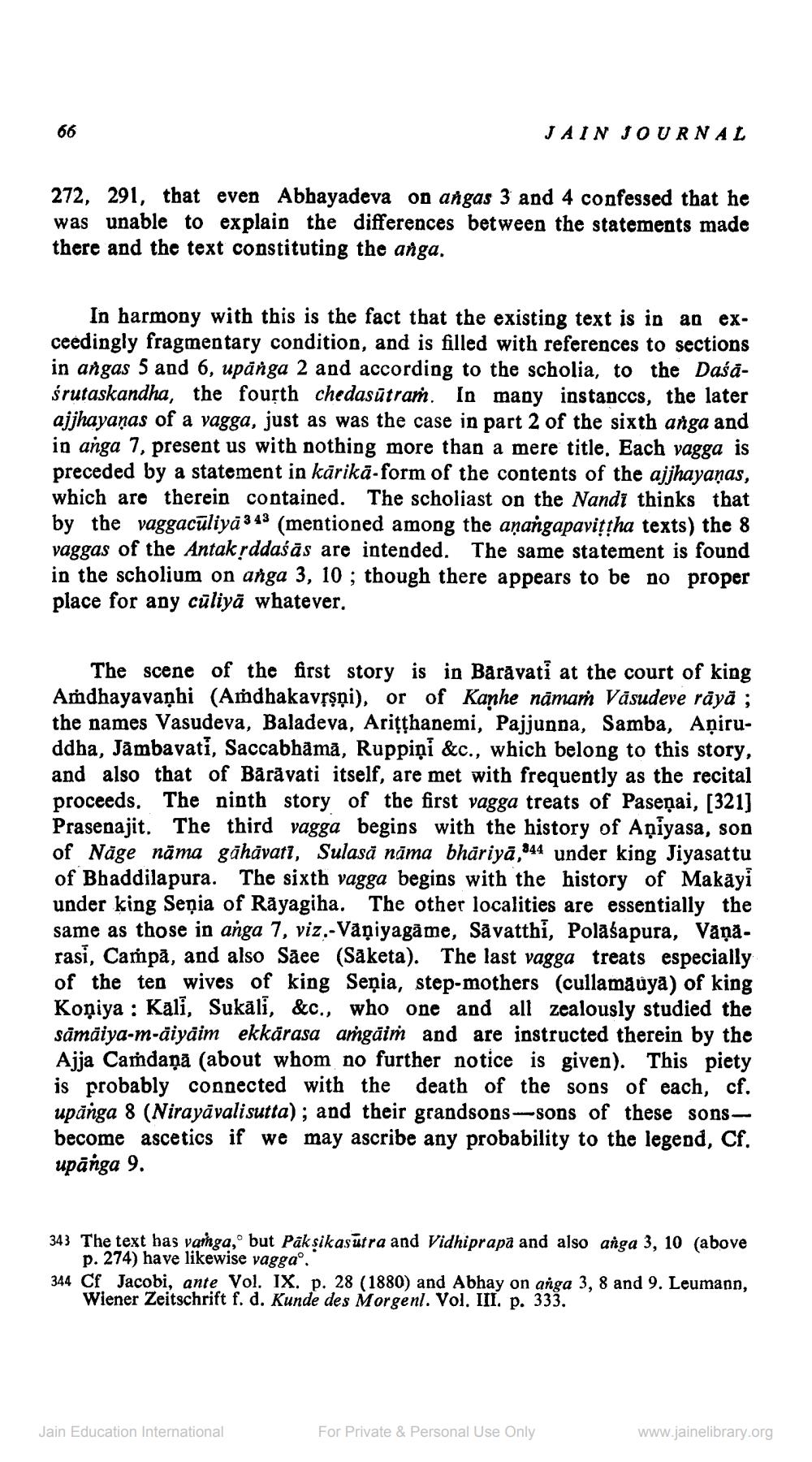________________
66
JAIN JOURNAL
272, 291, that even Abhayadeva on angas 3 and 4 confessed that he was unable to explain the differences between the statements made there and the text constituting the anga.
In harmony with this is the fact that the existing text is in an exceedingly fragmentary condition, and is filled with references to sections in angas 5 and 6, upanga 2 and according to the scholia, to the Daśáśrutaskandha, the fourth chedasūtraṁ. In many instances, the later ajjhayaņas of a vagga, just as was the case in part 2 of the sixth anga and in anga 7, present us with nothing more than a mere title. Each vagga is preceded by a statement in kārikā-form of the contents of the ajjhayaņas, which are therein contained. The scholiast on the Nandi thinks that by the vaggacūliyä 3 43 (mentioned among the aṇangapavitha texts) the 8 vaggas of the Antakyddaśās are intended. The same statement is found in the scholium on anga 3, 10 ; though there appears to be no proper place for any cūliyā whatever.
The scene of the first story is in Bårāvati at the court of king Amdhayavaṇhi (Amdhakavşşội), or of Kanhe nāmam Väsudeve råyå ; the names Vasudeva, Baladeva, Aritthanemi, Pajjunna, Samba, Aộiruddha, Jämbavati, Saccabhäma, Ruppiņi &c., which belong to this story, and also that of Bärävati itself, are met with frequently as the recital proceeds. The ninth story of the first vagga treats of Paseņai, [321] Prasenajit. The third vagga begins with the history of Aniyasa, son of Näge näma gāhāvati, Sulasă nāma bhariyā,944 under king Jiyasattu of Bhaddilapura. The sixth vagga begins with the history of Makāyi under king Seņia of Rayagiha. The other localities are essentially the same as those in anga 7, viz:-Vāņiyagāme, Savatthi, Polasapura, Vāņa. rasi, Campā, and also Sãee (Saketa). The last vagga treats especially of the ten wives of king Seņia, step-mothers (cullamauyā) of king Koniya : Kali, Sukāli, &c., who one and all zealously studied the sämaiya-m-aiyaim ekkärasa aṁgāiṁ and are instructed therein by the Ajja Caídaņā (about whom no further notice is given). This piety is probably connected with the death of the sons of each, cf. upanga 8 (Nirayāvali sutta); and their grandsons--sons of these sonsbecome ascetics if we may ascribe any probability to the legend, Cf. upānga 9.
343 The text bas vaihga, but Pak sikasutra and Vidhiprapa and also anga 3, 10 (above
p. 274) have likewise vaggao. 344 Cf Jacobi, ante Vol. IX. p. 28 (1880) and Abhay on anga 3, 8 and 9. Leumann,
Wiener Zeitschrift f. d. Kunde des Norgenl. Vol. III. p. 333.
Jain Education International
For Private & Personal Use Only
www.jainelibrary.org




